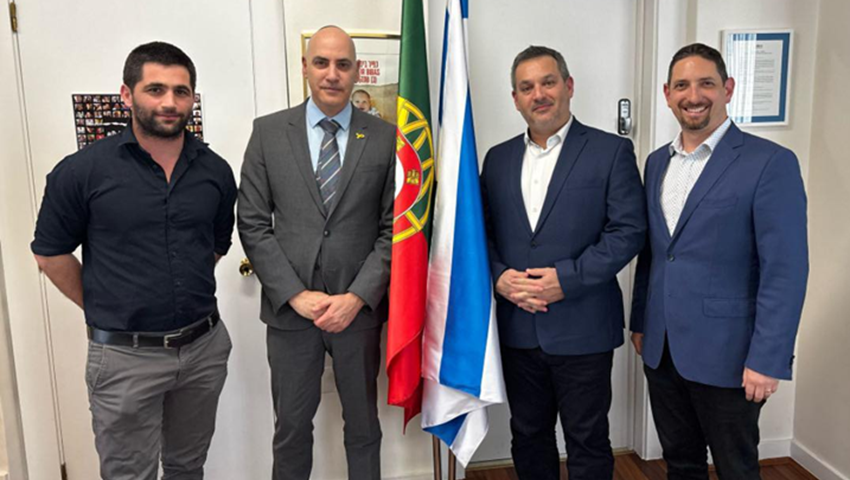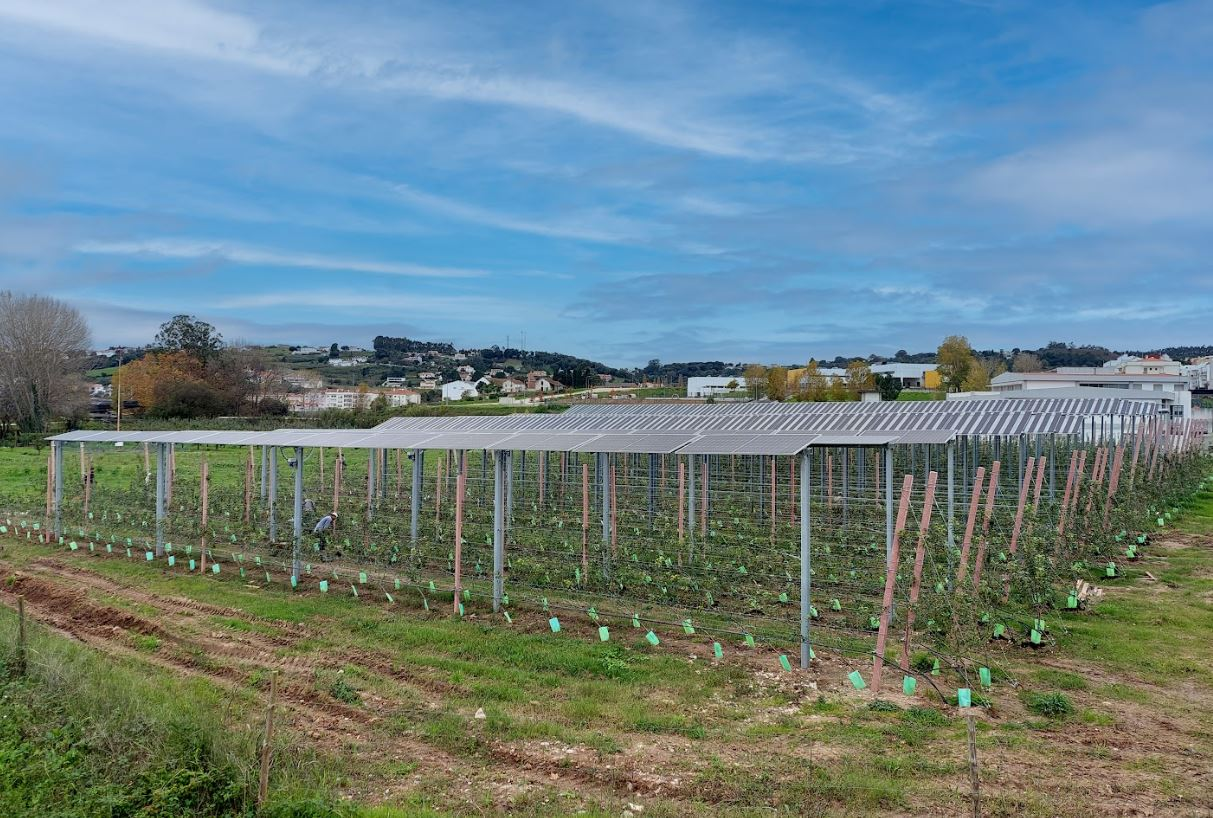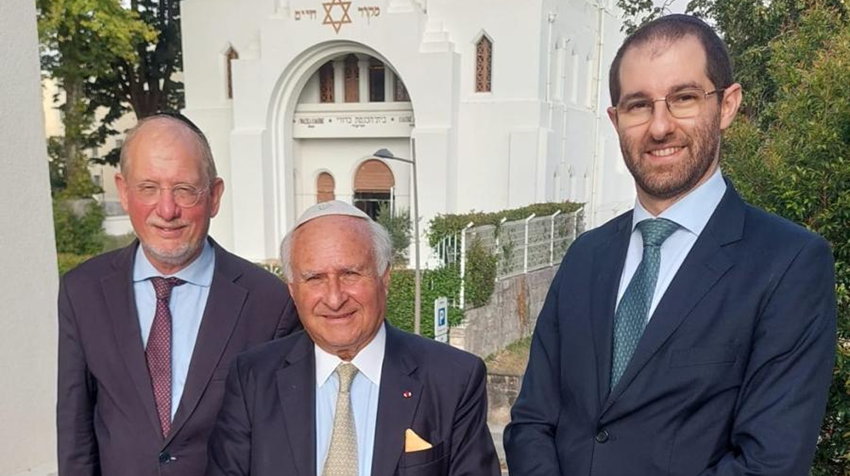Project featuring Solargik’s structure in Alcobaça
The Israeli company has already taken part in five solar projects in Portugal and plans to expand its presence by installing solar farms in challenging terrains such as mountains.
Solargik is a solar energy company that specializes in working behind the scenes—specifically, on the structures that hold solar panels. The Israeli firm designs, manufactures, and sells innovative mounting systems that allow panels to move more efficiently to capture sunlight, thanks to a combination of advanced hardware and intelligent software.
According to the company, its structures are smaller and lighter than those of most competitors, which lowers costs and allows for better land use and solar exposure. These features also enable installation in unconventional locations such as steep terrain and mountain slopes. Solargik has participated in five projects in Portugal and currently has nine more under development.
Portugal's solar capacity is rapidly growing. Last year alone, 1.77 gigawatts (GW) were installed, and the national goal is to reach 20 GW by 2030, according to the National Energy and Geology Plan. “This means we need to be able to install in more and more places—and we need tools that allow us to do so in locations that were previously considered impossible,” said Mo Horowitz, Solargik's Chief Commercial Officer, in an interview with ECO/Capital Verde.
Horowitz notes that the company can install solar panels on slopes of up to 30%, a capability that most competitors currently lack. “Most of the interest and the projects we’re working on in Portugal are focused on this type of challenging terrain,” he said, adding that this allows developers to use land that “nobody else wants,” often making it “much cheaper.”
Solargik has been active in Portugal since 2023 and already completed five projects—one of which remains undisclosed—and has nine more under development, totaling 390 megawatts in capacity.
The company has also partnered with Akuo on a pilot project in Alcobaça, exploring the use of solar panels in apple orchards. Another project, in partnership with Ecoinside, was built in Montemor-o-Novo, on the Minutos Dam, where the solar installation supports local energy needs through self-consumption.
Other partnerships include Smartwatt, for a plant in Roxo that spans a major water distribution canal, and Sotecnisol, for a site in Figueira de Cavaleiros. One upcoming agrovoltaic project—whose location and partner remain confidential—will soon be announced.
“We’re doing pilot projects specifically focused on agribusiness, with our structures installed four to five meters above ground, over orchards, vineyards, or farmland,” Horowitz said, referencing the Alcobaça project. He highlighted that Solargik is “one of the few” companies building at that height, enabling farmers to gain additional income while protecting certain crops from excessive sun exposure.
While southern Portugal has plenty of flat land, Horowitz pointed to the “grid challenge”—the reality that power production doesn’t always occur where demand is highest: “We’re helping bring generation closer to consumption,” he noted.
Another advantage is simpler permitting: since the panels adapt to the terrain, fewer land alterations are required, reducing environmental impact and streamlining the licensing process.
Solargik’s goal is to capture 10% to 15% of Portugal’s installed solar capacity by 2030, assuming the 20 GW target is met. “We don’t expect to dominate the market. But we believe there’s a very real need, and we can meet that demand,” Horowitz said.

Space and Movement Optimization
The photovoltaic panels used in Solargik’s projects are standard across the industry—often sourced from China. The difference lies in how Solargik structures them into smaller modular blocks. “It’s like Lego. With smaller pieces, you can build something more sophisticated,” Horowitz explained. Even on flat land, this modular approach helps use “every little corner” where larger structures might not fit or would be obstructed.
In one recent project, Solargik reports it was able to add 10% more capacity to the available area compared to a conventional setup. “That 10% can sometimes be the deciding factor for whether or not an investor moves forward,” Horowitz argued. In some cases, the company claims to have increased land capacity by 30% to 40%.
These smaller blocks also reduce steel usage by 20% to 30% compared to traditional structures, cutting one of the highest costs in solar infrastructure. The steel used for Portuguese projects is sourced locally, while the smaller, more technical components—like controllers and sensors, “the brain of the system”—are imported from Israel.
Solargik has also developed control software that can make “counterintuitive” decisions—a useful but not unique feature also adopted by competitors. Rather than simply following the sun, the software calculates when facing it directly could cause unwanted shadows on neighboring panels. Each block then adjusts in coordination to maximize total energy output across the entire farm.
In cases of curtailment—when the grid is saturated and can’t accept more energy—the standard solution is to dissipate excess energy as heat. Solargik instead programs the panels to reduce output during these times, helping extend their lifespan.
Thanks to its modular “Lego-style” adaptability and terrain optimization, Solargik claims its technology can deliver higher-than-average internal rates of return (IRR)—typically between 12% and 15%, compared to the 8% to 10% average in the industry.
Source: Ecco


































